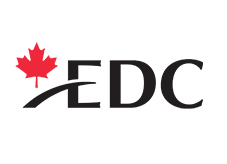Customer discovery: Identifying effective distribution channels for your startup
Distribution refers to the process of getting your product into the hands of your target customer, whether that is an individual consumer or a business user. Entrepreneurs need to identify effective distribution channel(s) to reach their target customer.
If your startup is following Steve Blank’s Customer Development Model, distribution is initially part of the customer discovery process. You will later re-examine and verify your assumptions about distribution channel effectiveness in the customer validation process.
Distribution is one of the four main elements of the marketing mix (the other three are product, pricing, and promotion).
Distribution: Identifying channel effectiveness
As part of his Lean LaunchPad course, Blank notes two key considerations for startups when first identifying effective channels for their product. Entrepreneurs must weigh the following: 1
1. How will customers want to buy your product?
Considerations for the customer may include:
- Does it come bundled with another product?
- Is it downloadable?
- Does it need installation?
- Can I buy it that same day?
2. How do you want to sell the product?
Your preference may be to sell it:
- Through a wholesaler, retailer or partner
- As part of a bundle with other product
- Directly from your startup
Blank also notes that like products or services themselves, distribution channels can be web-based (e.g., e-commerce, app stores) or physical (e.g., original equipment manufacturers [OEMs], retailers, direct sales).2 And depending on the channel, sales can be direct, indirect or through licensing.1 In the case of indirect channels, correctly understanding who your customer actually is will be critical for your startup—your customer may be the OEM, the VAR (value-added reseller), or the distributor.
Distribution channels: Financial considerations
In evaluating a potential channel for its effectiveness, entrepreneurs need to gauge the following financial considerations:3
- What are the channel costs—how much will your startup spend?
- What will be the indirect expenses, such as presales support or promotions?
- Will your customers need additional components to buy and use your product? If yes, how will they acquire those?
- What is your startup’s net revenue once you factor in the channel expenses?
Distribution channels: Further reading
If your startup has reached the stage of developing a distribution strategy, then you will also be working to build a pricing structure. For more information on distribution channels and pricing structures, see:
- The Four Steps to the Epiphany by Steven Gary Blank
- Should startups build distribution channels or sell products directly?
- Distribution agreement: Sample template
- Revenue models, product pricing and commercializing new technology
- The marketing mix in marketing strategy: Product, price, place and promotion

